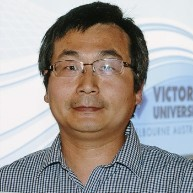Advanced Materials and Technologies for Wastewater Treatment Applications
A special issue of Materials (ISSN 1996-1944). This special issue belongs to the section "Green Materials".
Deadline for manuscript submissions: closed (20 August 2025) | Viewed by 1310
Special Issue Editor
Interests: water treatment; membrane research; soil remediation
Special Issues, Collections and Topics in MDPI journals
Special Issue Information
Dear Colleagues,
With increasing industrialisation, population growth, and urban development, both water scarcity and water pollution pose a threat to human welfare and ecosystems. Wastewater can be both a hazard and a precious resource for our world. Advanced materials and technologies such as membranes, functionalised materials, and advanced oxidation could turn wastewater into a significant water source for both industrial and domestic usages. Furthermore, these technologies can manage persistent chemicals of concern and recover valuable resources from wastewater, which is not achievable via conventional treatment methods.
The aim of this Special Issue is to cover the advancement of new approaches that could solve the existing issues in wastewater treatment through material innovations, such as the application of sustainable materials/adsorbent, membrane functionalisation, adsorbent modification, and oxidation enhancement.
Dr. Jianhua Zhang
Guest Editor
Manuscript Submission Information
Manuscripts should be submitted online at www.mdpi.com by registering and logging in to this website. Once you are registered, click here to go to the submission form. Manuscripts can be submitted until the deadline. All submissions that pass pre-check are peer-reviewed. Accepted papers will be published continuously in the journal (as soon as accepted) and will be listed together on the special issue website. Research articles, review articles as well as short communications are invited. For planned papers, a title and short abstract (about 250 words) can be sent to the Editorial Office for assessment.
Submitted manuscripts should not have been published previously, nor be under consideration for publication elsewhere (except conference proceedings papers). All manuscripts are thoroughly refereed through a single-blind peer-review process. A guide for authors and other relevant information for submission of manuscripts is available on the Instructions for Authors page. Materials is an international peer-reviewed open access semimonthly journal published by MDPI.
Please visit the Instructions for Authors page before submitting a manuscript. The Article Processing Charge (APC) for publication in this open access journal is 2600 CHF (Swiss Francs). Submitted papers should be well formatted and use good English. Authors may use MDPI's English editing service prior to publication or during author revisions.
Keywords
- wastewater
- material
- advanced oxidation
- adsorption
- membrane
- functionalization
Benefits of Publishing in a Special Issue
- Ease of navigation: Grouping papers by topic helps scholars navigate broad scope journals more efficiently.
- Greater discoverability: Special Issues support the reach and impact of scientific research. Articles in Special Issues are more discoverable and cited more frequently.
- Expansion of research network: Special Issues facilitate connections among authors, fostering scientific collaborations.
- External promotion: Articles in Special Issues are often promoted through the journal's social media, increasing their visibility.
- Reprint: MDPI Books provides the opportunity to republish successful Special Issues in book format, both online and in print.
Further information on MDPI's Special Issue policies can be found here.






